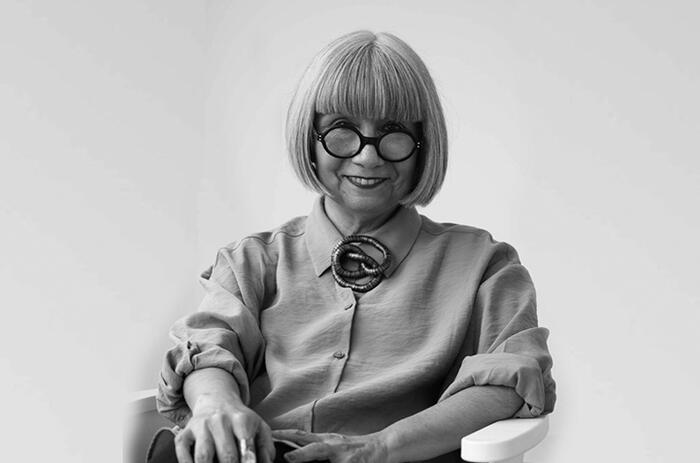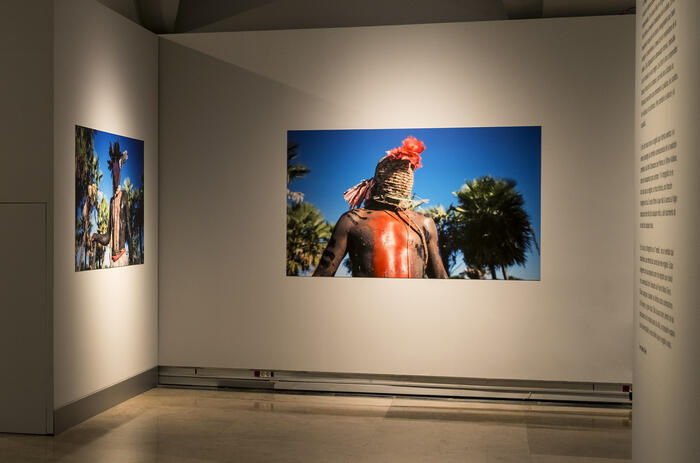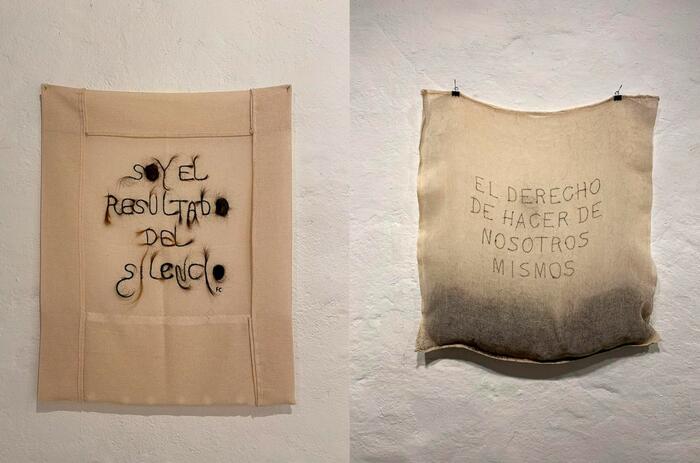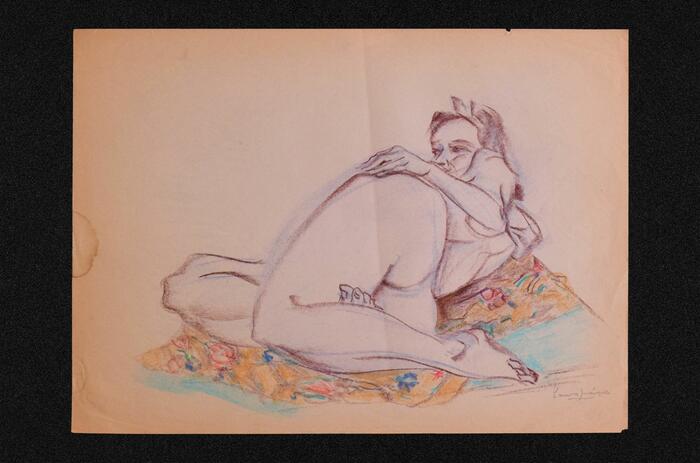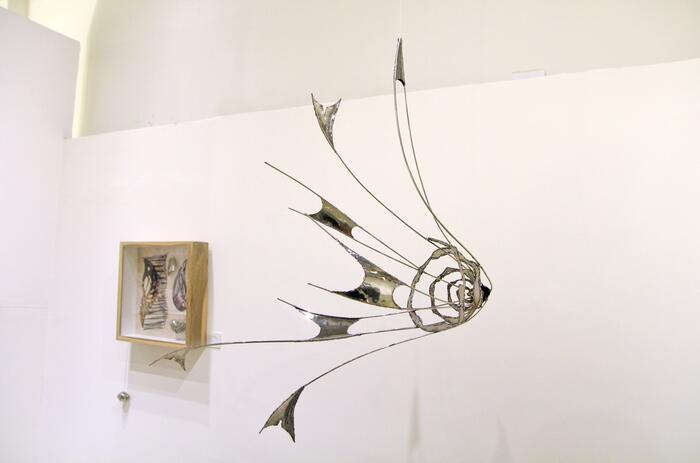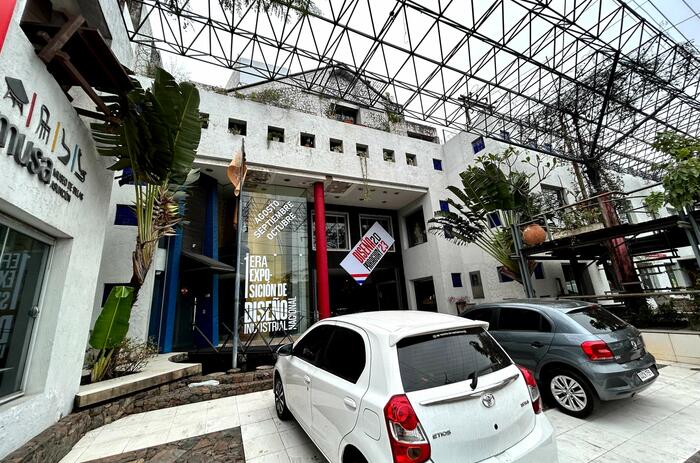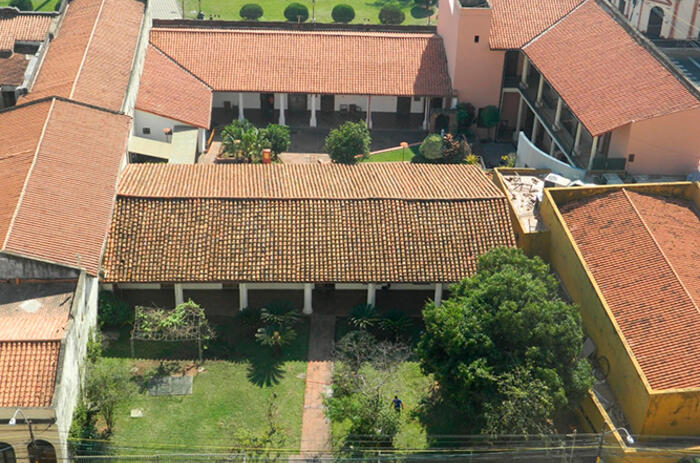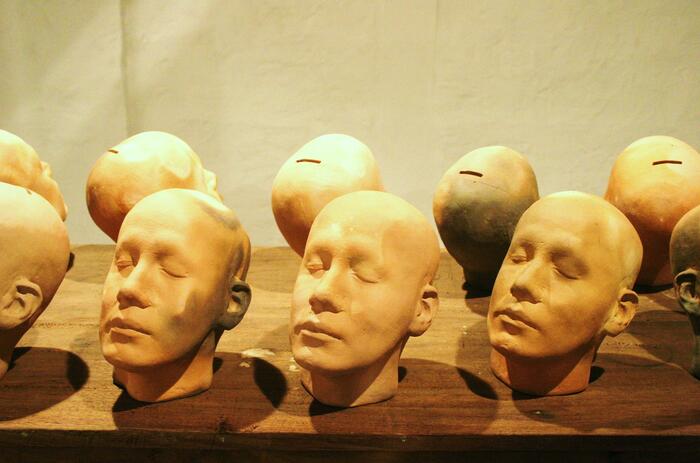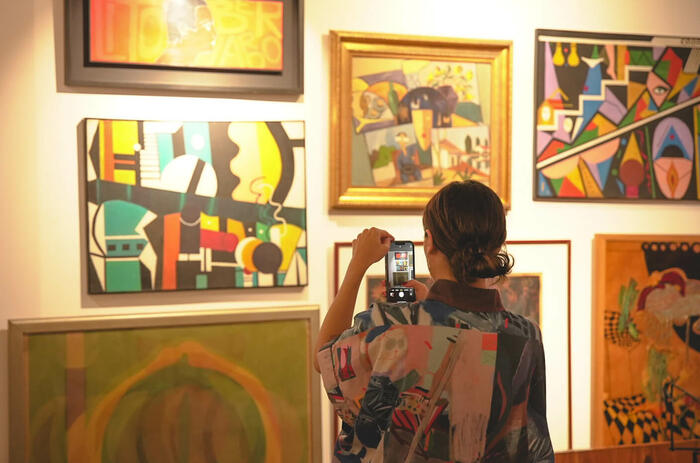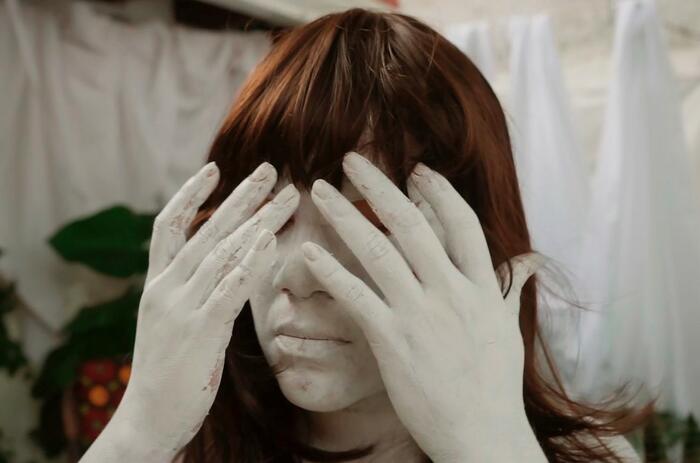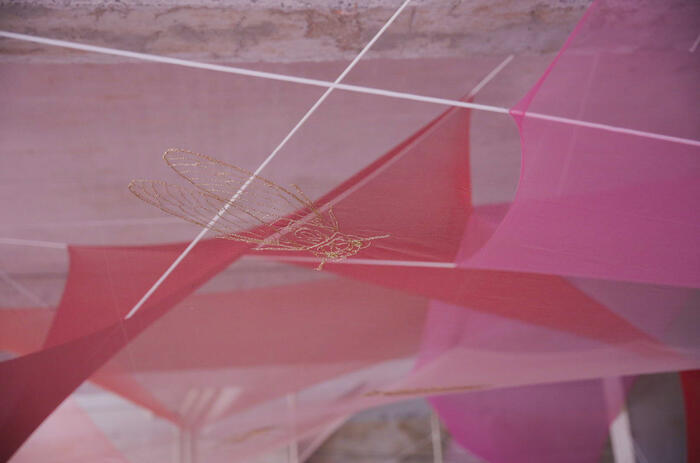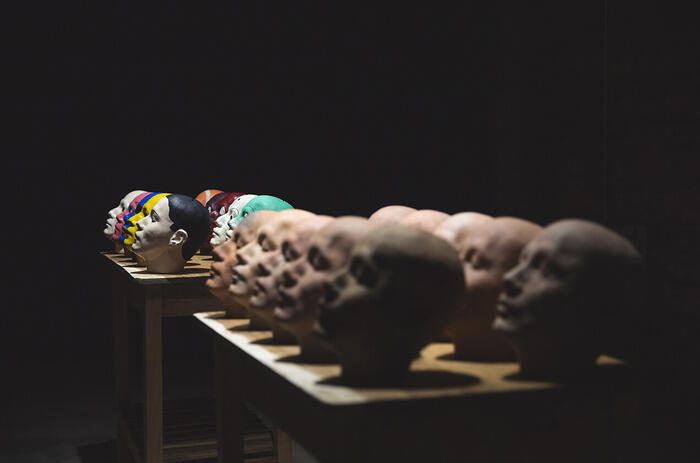COLECCIÓN MENDONCA: A QUEST FOR CULTURAL IDENTITY
The Mendonca Collection, part of the second edition of Pinta Sud | ASU, houses key works of contemporary Paraguayan art -although it also includes works by artists of other nationalities- and counts with the collaboration and curatorship of expert art critics such as Adriana Almada, Felix Toranzos, Osvaldo Salerno and Ticio Escobar.
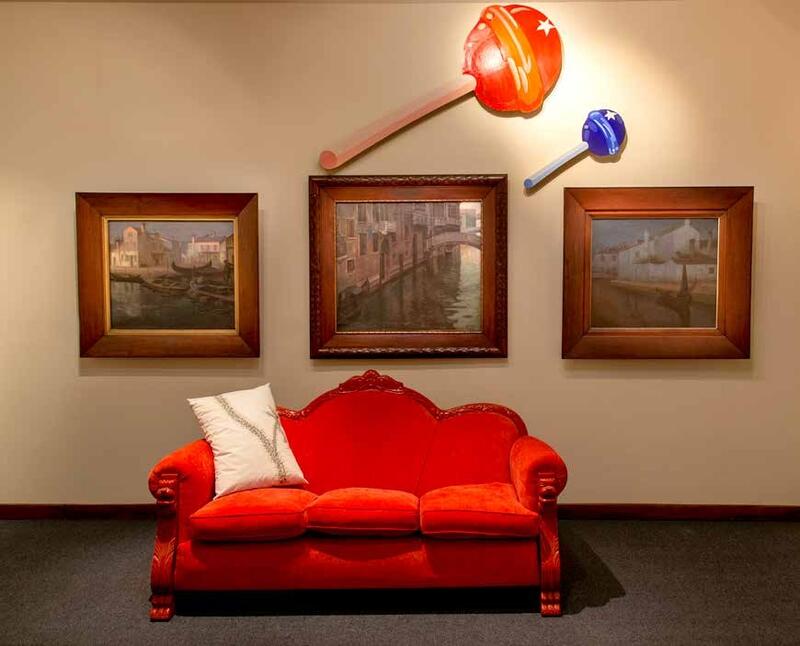
In an interview with Arte al Día, founder Daniel Mendonca and his son Eugenio explain the origin of this quest to represent, collect and share a cultural identity.
From a young age, Daniel Mendonca had a close relationship with the visual arts thanks to the influence of his mother, a university professor of Art History. This early closeness led him to develop a deep interest in contemporary art.
He explains: "Works of art, like books, have always been interesting and stimulating objects for me. However, the decision to collect art was directly related to a peculiar project. In the late 1990s, my wife and I decided to build a family house, but we didn't want it to be a conventional house. That decision triggered the idea that the house would house an art collection and a large library. The specific brief to the architects in charge of the project, my friends Hermann Dienstmaier and Liliana Hadad, was that the house should function as much as possible as a contemporary art gallery. Today the house houses hundreds of works of art, including sculptures, objects, installations, paintings and photographs by Paraguayan and foreign artists living in Paraguay. The house was built in 2000 and marked the formal beginning of the Mendonca Collection, although that name was suggested almost twenty years later, in 2019, by Ticio Escobar, on the occasion of the collection's first exhibition, entitled The Exile. The Mendonca Collection in the museum, held at the Centro de Artes Visuales/Museo del Barro with curatorship by Ticio Escobar himself and expography by Osvaldo Salerno. That was the first time the collection was exhibited to the public, outside its usual context, the family home. From then on, the collection acquired a special, almost vertiginous dynamic. Since then, the collection was exhibited every year in different museums or cultural centers in the country, including the National Museum of Fine Arts, in 2020."
-
Laura Márquez. Sin título, s/f. Enrique Giménez Velilla. Jeporeka, 2016
Alfredo Quiroz. Malos pensamientos, 2018. Malos pensamientos II, 2018. Le beau est partout, 2018. Photo-me, 2018. Bustos italianos, s. XIX © Eugenio Mendonca.
-
Alfredo Ouiroz. De la serie Reflexiones nocturnas. 2018. Cortesía del artista
-
Bernardo Krasniansky. Retrato renacentista 2015 © Paulina Nagy.
The Mendonca Collection relates to the myth of the Tierra Sin Mal (Land Without Evil) of the indigenous Guaraní culture, imagining the history of Paraguay as an eternal search for a better place. The collection was praised by various art critics for its approach and ability to activate diverse perspectives and times in the construction of a panorama of contemporary Paraguayan art.
"From a very personal point of view, I tend to see art as a social phenomenon. Because of my background in social sciences, I think and evaluate art from that perspective. I am interested in seeing the world through art. That is why the Mendonca Collection can be imagined as a story of the social history of contemporary Paraguay, with a series of very interesting thematic axes, such as political antagonism, economic inequality or environmental and social unprotection. From that point of view, the collection visually represents a specific time and space, contemporary Paraguay," adds Daniel Mendonca.
-
Piezas de Limoges, s/f. Osvaldo Salerno. Sin título. s/f Gusta Rectem. Insectos. s/f
Bernardo Krasniansky. Nina, 2005 © Eugenio Mendonca
-
Gustavo Beckemann
Sin título, 1998
Sara T.eor
Prohibido pintar, 2009
Mónica González
Mujer, pilar, malabarista, 1996
© Eugenio Mendonca
-
Josefina Plá
Sin título, s/f
Joaquín Sánchez
Te soñé. 2004
© Paulina Nagy
-
Klaus Henning
Sin título, s/f
Olga Blinder
Mujer huevo, 1967
Herman Guggiari
Sin título, s/f
Bettina Brizuela
Privadísimo,2003
© Ana Ayala
Over time, the Mendonca Collection has evolved and broadened its focus by incorporating works to enrich the context and establish connections with other artistic currents. There is a search to give a special meaning to the works, with a context that connects them and makes them part of something greater than themselves.
This vision was transmitted from Daniel to Eugenio, who from an early age was immersed in the art world thanks to the influence and example of his father. Eugenio developed his own appreciation for art, which led him to actively collaborate in the expansion of the collection. The teamwork between father and son consolidated the collection even further, making it a living testament to an artistic legacy they share.
"I believe that the role of collecting plays a determining part in creating spaces for reflection and the production of knowledge about heritage and culture, about what makes us unique. In one way or another, art functions as a communication tool through which an exchange of thoughts, feelings, ideas, of who we are as a society takes place, and today I see that the collection, with a considerable amount of works, allows us to build different versions of the country we want, and I find that fascinating," explains Eugenio Mendonca.
In the context of Pinta Sud | ASU, which will be held from August 7 to 13, 2023, the collection's exhibition El país de las mujeres (The Country of Women), curated by Adriana Almada, will be inaugurated.
"For years, the curator of the collection, my dear friend Adriana Almada, and I imagined an exhibition of women artists from Paraguay and now we saw the opportunity to make it happen at the Juan de Salazar Cultural Center of Spain, on the occasion of the next edition of Pinta Sud-ASU. For this purpose, we put together a diverse team, with professionals from different areas (documentation, survey, historical research, restoration, exhibition design, installation design, device manufacturing, communication, press and curatorship). The idea was to try to break the marked tendency to make women's artistic production invisible. Thus, the exhibition is based on the artistic production of more than thirty women and more than sixty works of contemporary art produced in Paraguay, from 1960 to the present day. I am inclined to believe that the exhibition will mark a milestone in our art history," said Daniel Mendonca.
Furthermore, Eugenio Mendonca adds: "I believe that giving continuity to this series of exhibitions that we have been holding annually since 2019 puts the collection on the local and international scene as an institution in the process of consolidating itself as a reference in terms of contemporary production in Paraguay, and in some way also invites other local actors in collecting to follow a line of work that as we mentioned mobilizes a lot of actors who are also part of an increasingly vibrant scene".
-
Alejandra Mastro De la serie El revés del panóptico, 2019 Cortesía de la artista
-
Laura Mandelik. La gallina de los huevos robados, 2015 Cortesía de la artista
-
Feliciano Centurión
Sin título, s/f
Claudia Casarino Trastornos del sueño, 2011 Enrique Careaga Déplacements ondulaires, 1969/2005
© Eugenio Mendonca
-
Hugo Cataldo Barudi. Pene de caramelo colorado endulzado con Asociación Nacional Republicana, 2017; Hugo Cataldo Barudi. Pequeño pene de caramelo azul endulzado con liberal radical, 2017; Pablo Alborno. Paisaje veneciano, 1909; Juan Anselmo Samudio, Paisaje de Venecia, s/f; Juan Anselmo Samudio, Paisaje de Burano, 1909; Yuki Hayashi, Sin título, 2013 © Javier Medina Verdolini

